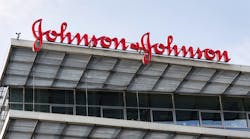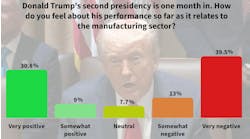Johnson & Johnson Releases Company Earnings as Health Agencies Evaluate Vaccine
Johnson & Johnson released its first quarter 2021 financial results on April 20, the same day the European Medicine Agency recommended its vaccine continue distribution despite a possible link to rare blood clots.
Evaluating the Vaccine
The Pharmacovigilance Risk Assessment Committee, a group at the European Medicine Agency in charge of evaluating the risk-benefit ratio of medicines, concluded April 20 that Johnson & Johnson should include a label on its COVID-19 vaccine but that vaccinations using it should continue.
The blood clots, which the PRAC stresses are “very rare,” have all occurred in patients under the age of 60, the majority of whom were women. The PRAC posited that an immune response to the virus might account for the blood clots, which have been associated with low platelet counts—unusual for clots.
Of 7 million people who have received Janssen’s vaccine in the United States, the PRAC noted, eight people have developed blood clots that may have been related to the drug, and one person has died.
“The reported combination of blood clots and low blood platelets is very rare, and the overall benefits of COVID-19 Vaccine Janssen in preventing COVID-19 outweigh the risks of side effects,” said the committee.
On April 13, out of “an abundance of caution,” the FDA recommended vaccine providers pause use of the Johnson & Johnson vaccine while investigations into the potential side effect continue.
First Quarter Earnings
The New Jersey-based pharmaceutical giant who produced the vaccine earned $22.3 billion in sales in the first quarter of 2021 and $6.2 billion in net earnings. Yearly sales grew 7.9% and earnings rose 6.9% compared to the first quarter of 2020.
The company also made more money from outside the United States than it made domestically in 2021 as international sales picked up significantly: in 2021, J&J made $11.111 billion in U.S. sales compared to $11.210 in international sales. U.S. sales grew 3.9% from $10.7 billion in 2020 and international sales grew 12.2%.
As in 2020, the company made the bulk of its money from its pharmaceutical operations, pulling in $12.2 billion, 9.6% more than in 2020, from sales of drugs for conditions like multiple myeloma and Crohn’s disease. Sales of the company’s COVID-19 vaccine have earned the company $100 million to date, making up almost precisely one-tenth of the company’s $1 billion sales from treatments for infectious diseases.
Sales grew faster in Johnson & Johnson’s medical devices wing, which sold $6.6 billion worldwide in devices for surgeons, doctors, and nurses, grew 8.8% excluding acquisitions and divestitures and 10.9% including them.
Positive sales in medical devices and pharmaceuticals made up for a smaller loss in Johnson & Johnson’s consumer health business, which reaped $3.5 billion in sales, 2.9% down from last year excluding acquisitions and divestitures. Johnson & Johnson attributed the loss to the significant increase in “COVID-19 pantry loading” seen in early 2020, and noted that sales of Listerine, baby products, and nicotine gum are up.
“Johnson & Johnson delivered a strong first quarter performance led by the above market growth of our pharmaceutical business and continued recovery in medical devices,” said CEO Alex Gorsky. He called the results a “testament” to the dedication of Johnson & Johnson’s 135,000 employees worldwide.




